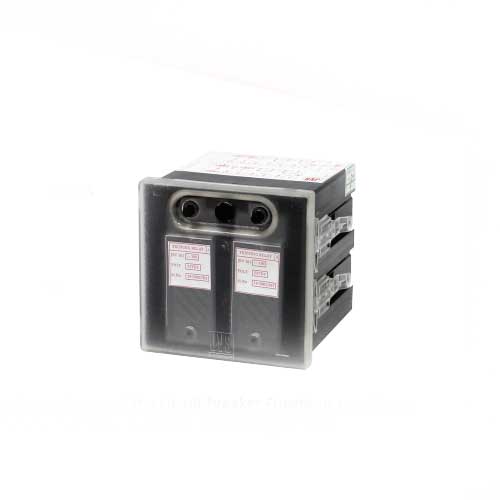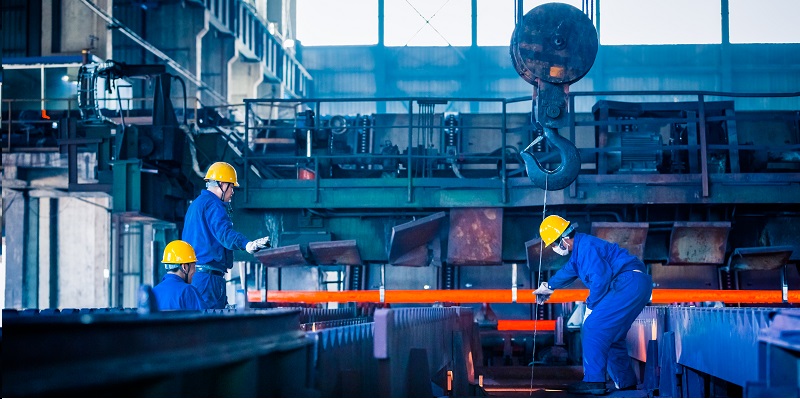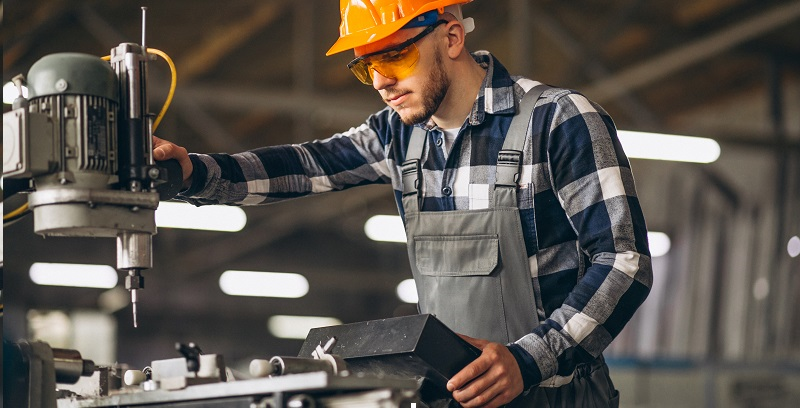Schedule a Call Back
Role of Magnets in Fabrication
 Technical Articles
Technical Articles- Mar 12,15
Role of magnets in handling plates/cut-outs in CNC plasma/oxyflame cutting machines

The fabrication industry extensively uses plasma/CNC (oxy flame) profile cutting machines for steel plates. Generally plates of sizes ranging from 6300 x 1500 mm to 12500 x 3500 mm, of varying thickness, are loaded onto these plasma/oxy flame cutting machines. The machine is fed with a program and the cutting commences.
These machines are pretty fast and cutting a standard profile for a 6300 x 2500 mm plate would take 2 to 6 hours depending on the size of profile and thickness. A lot of time is wasted in loading of plates and removal of the cut-outs when the machine either sits idle, or one has to order for bigger beds to load multiple plates thus partially reducing the downtime. The challenge is to load a full plate and unload the cut-outs in quick time to get maximum productivity.

Time is also wasted in picking up the plates, which are generally stacked in bundles near the machine. It takes a minimum of 2-4 helpers along with crane operator and about 20 minutes to a single plate onto the machine. The plate is shifted a little and lifted using a side clamp or a shovel and a wooden dunnage is inserted in between the top plate and the next plate. Then a chain is passed in between the two plates. Similar process is repeated at the other side, and a chain passed under the plate, hooked to the crane and lifted. To speed up the process sometimes plate clamps are also used. This process has inherent problems, with enough room for mishaps and damage to the plates. The lifting with chains, etc., also adds a lot of stress to the plate.

An electro permanent magnetic plate handling system can be used to load full length plates on to the machine. The beam/magnets are designed according to the plate size. The number of magnet/distance between magnet and magnet capacity depends on the load. As the thickness of the plate decreases, the number of magnets increases and the distance between the magnets also reduces. Since thin plates have a tendency of bending/bowing down, the magnets have to the placed accordingly, depending on:
Size of plates to be handled, i.e., length and width, and Thickness of plates - thinner plates require more number of magnets as distance between them has to be reduced to ensure safe lifting as thinner plates sag more!

The magnets have a number of safety features making the equipment fool proof for handling of load. These are:
1. The lifted plate will not drop even during power failure: The magnet design is electro permanent is nature. It houses 2 sets of permanent magnets, called reversible magnets (which are switched electrically and undergo a change in magnetic polarity every time a lift operation is commenced) and non-reversible magnet (which maintain their magnetic polarity throughout the lift of the magnet). Electricity is required only during switching On/Off the magnet. Once switched, because of the permanent nature of the magnet inside, no external electrical force is required to keep the job clamped. This ensures that the lifted job will not fall even during power failure.

2. Ensure that the magnet lifts only one plate: Since the magnet selection is done to lift thickest plates, in case of thin plates more than one plate may get lifted. But by using an inching button, the power of the magnets can be reduced gradually and the magnet lifts only one plate, dropping the others. This is a unique design of this systems.
3. 30% more magnetic power given in transportation stage: The magnetisation process is divided into two parts. In the first pick up stage, magnetic power can be varied depending on the thickness of the plate. A minimum of 25% to a maximum of 70% magnetic power is given during first magnetisation process. During second magnetisation, after the plate is lifted, irrespective of the selection, 100% magnetic power is given. Hence the magnet power is increased by a minimum of 30% prior to transportation stage, thus ensuring clamping power to its maximum level for safety.
4. Accidental Demagnetisation Prevention Mechanism (ADPREM): This is a safety devise added to the beam. It ensures that demagnetisation is disabled while the load is in air. Even if the demagnetisation button is pressed, the load will not drop till the beam is rested on a surface and the chain is slackened.
5. No wooden dunnage is required between plates: This prevents any bending of plates and also reduces cycle time.
6. 97% electrical power saving when compares to similar electromagnet: Due to the electro permanent nature of the EPM, when compared to a conventional electromagnet, there is a 97% saving in electrical power.
A customer wanted to load a 16-metre long plate onto the machine. The minimum cut-out size was 300 x 300 mm. The maximum plate weight was 18,000 kg. The crane capacity was 25 tonnes.
To keep the total weight of beam and magnet under 7T, Sarda Magnets proposed a telescopic cut-out handling system. Using the equipment a full plate of 16,000 x 2,500 mm approx. 18,000 kg maximum could be loaded onto the machine.
Once the cutting is completed, cut-out in the range of 6,000 x 2,500 mm can be unloaded in one lift. The beam can be compressed prior to the lift so that it takes less space. Hence in 3 lifts, the complete table can be cleaned and the next plate could be loaded. Thus use of the Sarda Cut-Out Handling System enabled the customer to cut 15-25% more steel per day.
The use of Sarda Cut-Out Handling System not only helps cut more steel, it also saves time, reduces cost of cutting, reduces accidents and saves space. Lots of savings!

Once the plate is loaded on to the cutting machine, the program cuts the plates. The cut plates can be of various shapes and sizes. Since the above mentioned magnetic plate handling system was designed for loading of full plates only, one cannot use the same for unload of cut-outs.
Generally the cut-outs are handled using conventional methods or using smaller magnets.
Sarda Magnets manufactures E-lift, permanent magnetic lifter, which is lever operated. Generally the capacity used for handling of cut-outs is 300 kg or 500 kg versions because they are very light weight and handy. One can easily operate the same on a cut-out to be lifted.
The only down side is that these magnets are rated for a maximum temperature of 80?C. Hence, after cutting, the plates have to be allowed to be cooled down before the magnet could be used. If the E-lift is placed on a hot object whose temperature is >80?C, it will cause permanent damage the magnets from inside.

To cater to hot handling, the company also supplies "Hot E-lift" permanent magnetic lifter. Hot E-lift has capability handle cut-outs up to 200?C. The cut-outs can be lifted sooner as they need not cool down very much. These are useful at places where time is limited and fast cleaning of table is required.
With use of small magnets, there still remains the problem of unloading one piece at a time. This is ok if the cut pieces are large and in 10-15 lifts the machine table is cleaned up. If the cut items are small, say an average of 300 x 300 mm, it takes a lot of time to clean the complete table, more so with size and geometry becoming very complex. Also, since the cutting operations have become faster with modernised machines, there are times, when the cutting is completed. The machine waits for the table to be cleaned for next plate to be loaded for cutting. Since the cost of running the machines are pretty high, this downtime increases the cost of cutting.
For fast cleaning of cut-out and skeleton the company has developed the Sarda Cut-Out Handling System. The system is designed according to the customer requirement depending on the minimum job size, which the customer wants to lift. The system constitutes of multiple magnets on a spreader beam placed strategically such that the smallest job size would be lifted. Since the number of magnets adds a considerable weight to the beam, it is recommended that the equipment should be designed taking into account the crane capacity.
During Imtex 2015 in January at the BIEC, Bangalore, Sarda Magnets Group presented 4 new product ranges:
- Magnaslot - Electro permanent magnetic (EPM) chucks used in the machine tools industry for clamping of dies/plates/tools/forgings/casting during machining. Conventional EPM chucks are generally made with bolting design, which is structurally weak, and/or are filled with epoxy, which gives two different materials in working surfaces during machining (hard steel + soft epoxy). With the heavy cutting parameters, there is unequal heating of magnet resulting in inaccuracies. The patented Magnaslot design is made from a monolithic steel frame, giving only a total steel face for clamping. This obviates the inaccuracies, which can arise during machining
- Cut-out plate handling using magnet - Magnets are used for loading of plates on to plasma/laser cutting machine. But the unloading of cut plate is generally done manually or at best using a smaller magnet. With EPM plate cut-out handling system, one can load a full plate on the cutting table. Using the same magnet, cut-out with a minimum defined size can be safely lifted off the table
- Safebat - This is a battery operated EPM lifter which patented flux sensing technology. Generally magnets are designed for handling of steel plates/blocks. The clamping power of magnet varies depending on various factors like surface finish, temperature, area of contact, material, etc. Hence, it is very difficult to know the actual clamping power generated by the magnetic lifter. With the patented flux sensing technology, one can accurately predict the clamping power generated by the magnet, and
- Safeflux - EPM chucks are generally meant for clamping of jobs during machining. But since one can never know the actual clamping power generated by the magnet, machining of jobs are generally done by past experience or trial and error method. With a recent patent it is possible to inform the actual clamping power generated by the magnet in real-time. By this, the user can modify the cutting parameters based on the clamping power achieved.
Related Products

High Speed Tripping Relay Two Element Relay - Jrv 181x2
JVS Electronics Pvt Ltd offers a wide range of high speed Read more

Plenty of Motion Possibilities in a Compact Housing
B&R Industrial Automation offers a wide range of plen Read more

High Speeed Tripping Relay Three Element Relay
JVS Electronics Pvt Ltd offers a wide range of high speed tripping relay three element relay - JRV 181x3.












